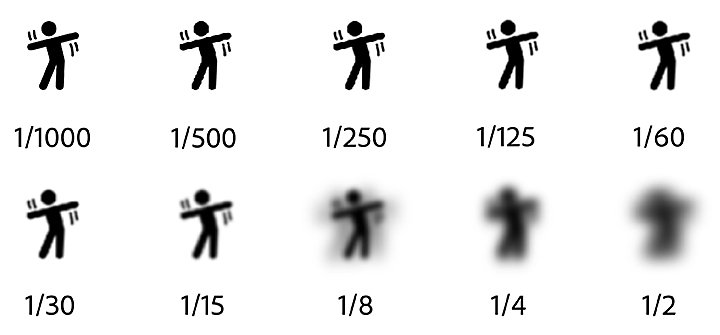Shutter speed refers to the length of time that the camera’s shutter remains open to allow light to enter and hit the camera’s sensor or film. It is typically measured in fractions of a second, such as 1/500th of a second or 1/30th of a second.

A fast shutter speed (1/500th of a second or faster) is used to freeze motion and capture sharp images of fast-moving subjects such as sports or wildlife. A slower shutter speed (1/30th of a second or slower) is used to intentionally blur motion, creating a sense of movement or motion blur.
The shutter speed also affects the exposure of the image. A faster shutter speed allows less light into the camera, which requires a larger aperture (lower f-stop number) or a higher ISO to compensate for the reduced light. A slower shutter speed allows more light into the camera, which requires a smaller aperture (higher f-stop number) or a lower ISO to compensate for the increased light.
The shutter speed also affects the amount of light that is captured in a given scene, which can be used creatively to adjust the exposure or to achieve a specific aesthetic effect. For example, using a slow shutter speed to capture a long exposure of a moving object, such as a waterfall or a city skyline at night, can create a blurred or dreamy effect that conveys a sense of motion or time passing.
In summary, shutter speed is a key setting in photography that controls the length of time that the camera’s shutter remains open to capture light. It affects the sharpness of the image, the amount of light that enters the camera, and can be used creatively to capture motion or to achieve a specific aesthetic effect.
